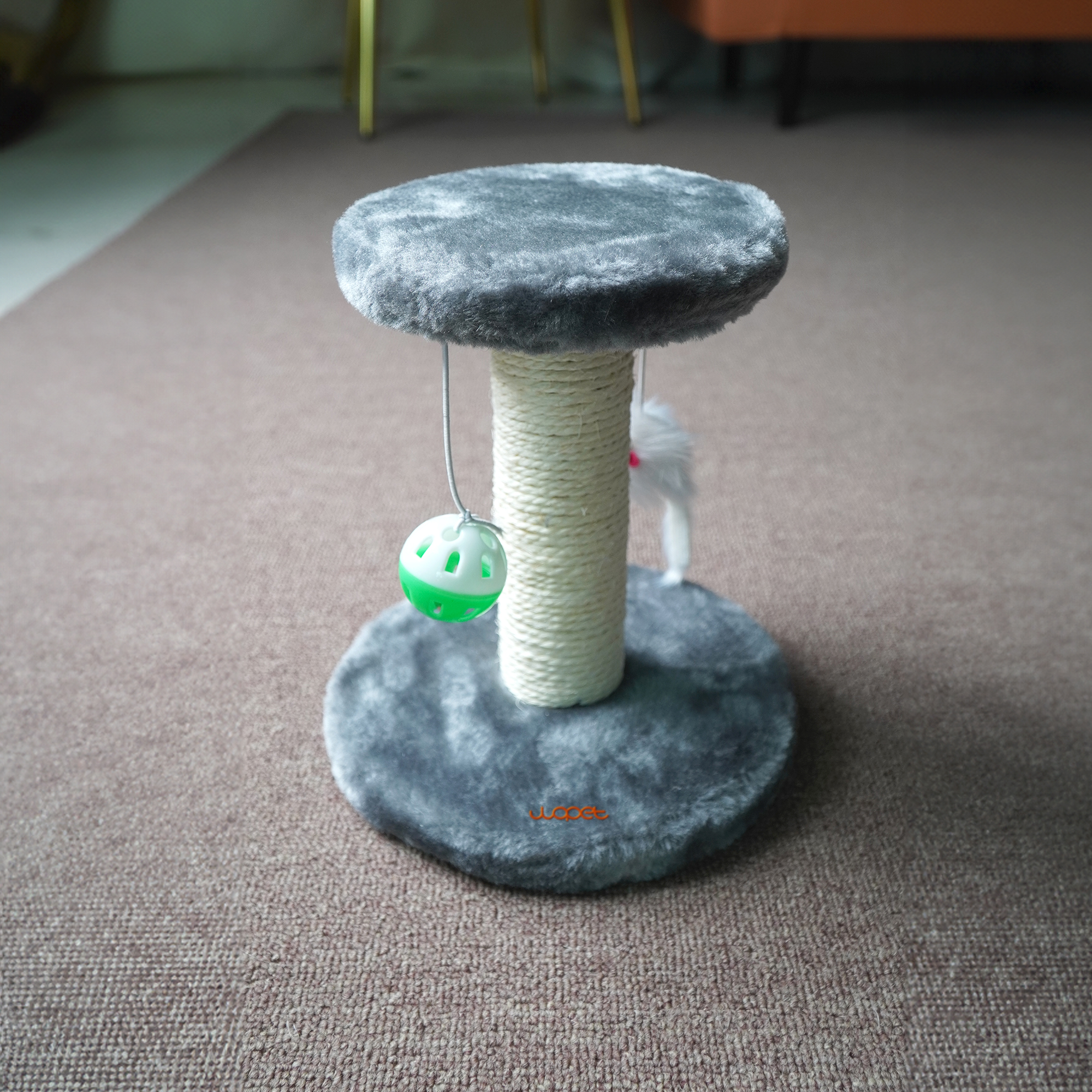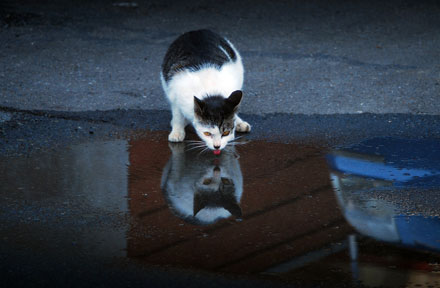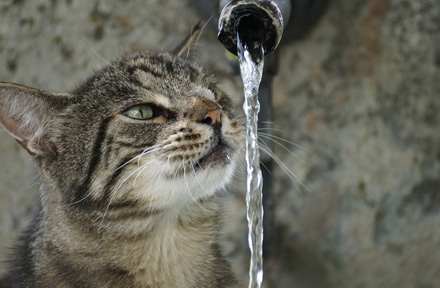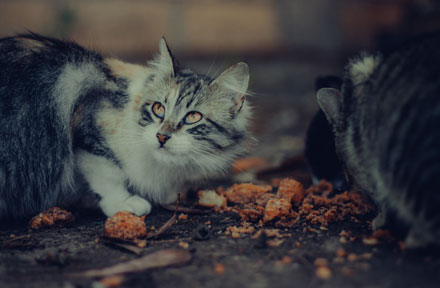Jun 05, 2025
Author:Lisa Martinez

One moment, they’re purring. Next, they sink their teeth into your hand like you owe them money. No hissing, no warning. Just bite. If it feels random, you’re not alone. But here’s the truth: cats don’t randomly do anything. There’s always a trigger. You’re about to uncover what it is—and how to stop it before it turns into a daily guessing game.
This guide breaks down what those surprise cat bites actually mean—emotionally, physically, and behaviorally. You’ll learn how to read the cues, fix what’s setting them off, and make biting a thing of the past.
Here’s what we’ll cover:
● Why cats bite 'out of nowhere' (spoiler: it’s not random)
● Medical reasons your cat may act out with sudden aggression
● How overstimulation and touch sensitivity work
● Signs your cat is stressed, bored, or anxious—and how biting plays into it
● What you might be doing (unknowingly) to trigger the bite
● How to train your cat out of this behavior—safely and effectively
● Tools and smart products that can help curb biting tendencies
No fluff. No guesswork. Just clear answers to the biting problem keeping you on edge.
Your cat didn’t snap. They responded. You missed the warning. That quick bite after a cuddle session? Or the sudden nip while you’re walking past? Those aren’t accidents. They’re deliberate responses to a trigger—something your cat reads as a boundary crossed or an missed.
Cats don’t vocalize discomfort like dogs. They don’t bark. They act with precision. And biting is one of their clearest forms of communication.
Most 'random' bites stem from a pattern of misread signals. You might have touched a sensitive spot. Stayed a second too long with a scratch. Or walked past during their high- hour. Your cat’s body language likely showed tension—tail twitching, ears flattening, and eyes narrowing. But those signals tend to go unnoticed by humans moving too fast or assuming all affection is welcome.
Here’s what drives the bite when it feels like it came from nowhere:
● Overstimulation from petting or physical contact
● Redirected aggression occurs when your cat is agitated by something else but lashes out at whoever is closest
● Sudden fear or surprise triggered by movement, noise, or scent
● Assertion of personal space when boundaries are ignored
● Inconsistent handling that teaches confusion instead of trust
These moments aren’t mysteries. They’re messages. We’re the ones not listening.

Cats hide pain well. Too well. By the time they bite without warning, something may already be wrong under the surface. Sudden, uncharacteristic aggression—especially if focused on biting—can point to an underlying medical issue. It’s not about attitude. It’s about discomfort.
Pain is a common trigger. Cats in pain may lash out when touched near a sensitive area. You may not even know where the injury is. It could be internal, or it could be linked to arthritis, dental pain, or even a minor wound you haven’t spotted.
Chronic illness can also shift behavior. Conditions like hyperthyroidism or neurological disorders can increase irritability and reduce tolerance for physical contact. Hormonal imbalances or cognitive changes in older cats may lead to unpredictable responses, including sudden nips during routine interactions.
Infections—whether internal or skin-related—can make a cat more reactive. A bacterial issue, ear inflammation, or even a urinary tract infection can make your cat feel threatened by basic handling.
These are some of the medical issues linked to sudden biting:
● Arthritis or joint pain
● Dental infections or abscesses
● Neurological or sensory issues
● Skin allergies or hotspots
● Internal pain or inflammation
● Hormonal disorders
● Aging-related cognitive decline
If your cat bites out of nowhere and it feels unlike them, don’t guess. Rule out medical causes before trying to retrain the behavior.
Some cats love a good rub. Others tolerate it, for a while. Overstimulation happens when physical contact crosses a cat’s comfort limit. It builds up fast. What starts as pleasant can quickly become too much, and the bite that follows isn’t random—it’s the final line of defense.
Touch sensitivity varies by cat. For some, repeated strokes in a certain area—like the base of the tail or belly—can trigger irritation. Their nervous system reacts strongly to sensation, and once that sensory input hits overload, their body tells them to shut it down. That shutdown comes with teeth.
Here’s how overstimulation biting typically builds:
● Petting starts off welcome—purring, leaning in
● Small shifts in posture—tense muscles, tail flicks
● Ears angle back, eyes fixate, skin may ripple
● Then—bite. Quick. Direct. Often followed by a retreat
Understanding this response means watching more than you touch. Learn their limits. Respect the early signs.
Common high-sensitivity zones include:
● The belly
● The base of the tail
● Along the spine
● Behind the ears (in some cats)
If your cat bites during petting, it’s likely not aggression. It’s overstimulation. Reduce the duration. Vary the contact. And always keep an eye on their body cues.
Behavior has a cause. And when cats feel mentally off-balance, biting can become an outlet. Not because they want to hurt, but because they’re trying to release or redirect energy. Here are the clearest signs your cat may be dealing with stress, boredom, or anxiety—and how each connects to biting.
● Hiding more than usual: If your cat suddenly starts avoiding people or places they normally enjoy, it’s a stress signal. When they do come out, they may be more defensive, using biting to control space or limit interaction.
● Sudden destructive behavior: Scratching furniture, knocking things over, or biting cords often points to boredom. If energy isn’t burned off through healthy play, it finds other outlets—including your hands.
● Tail flicking or puffing: That tail movement isn’t random. It’s agitation. If your cat’s tail puffs or swishes sharply when approached, biting is likely their next move. The cause could be stress or frustration.
● Pacing or restlessness: When cats don’t feel settled, they may bite during interactions as a way to create distance or push back against unpredictability. Restlessness often masks anxiety.
● Overgrooming or sudden grooming interruptions: Licking to the point of hair loss can signal stress. And if they interrupt grooming to bite during contact, it's often a defensive response triggered by internal discomfort.
When these behaviors show up, biting is rarely about you. It’s about them trying to cope. And what they need is a better outlet.

Most cat bites aren’t about aggression. They’re reactions to how humans behave—often without realizing the impact. Small, routine actions can easily trigger defensive or overstimulated responses if your cat reads them the wrong way.
Let’s break down what you might be doing to set off the bite response.
● Touching high-sensitivity areas: Some cats don’t tolerate belly rubs, tail strokes, or ear flicks. If you touch these zones, especially during rest, the bite acts as a quick correction.
● Moving too fast or unpredictably: Quick reaches or loud footsteps can activate your cat’s defensive reflex. This is especially true if they’re resting or focused elsewhere. A fast hand can look like a threat.
● Ignoring early warning signals: Tail flicks, pinned ears, or shifting posture usually come before a bite. Missing those signs—and continuing the interaction—can lead directly to a snap.
● Forcing physical interaction: Picking up your cat without permission or trying to cuddle them when they’re not in the mood builds resentment. Biting becomes a way to end unwanted contact quickly.
● Inconsistency in discipline or handling: If you sometimes let them nibble during play, then suddenly scold them, you send mixed messages. Cats rely on pattern recognition. Inconsistency confuses them—and can fuel reactive behavior.
Understanding how your behavior shapes theirs is the first step. Every interaction either builds trust or breaks it.
Biting is a natural feline behavior, but with consistent training, you can guide your cat toward more appropriate interactions.
Cats bite for sensory feedback. If that urge doesn’t have a valid outlet, your hands become the target.
Redirection works because it replaces the stimulus. When your cat shows signs of biting—tail twitching, fixed stare, rear-body tension—you must intervene before the bite lands. Don’t yank your hand back. Stay still. Grab a wand toy, plush kicker, or chew-safe object and shift their focus fast.
Timing is everything. The redirection must happen within seconds, or the association breaks. Avoid small toys that look like fingers. Use longer ones to create space and simulate prey-like movement.
Toys that work well for redirection:
● Feather wands for chasing and catching
● Cat-safe chew sticks for oral fixation
● Spring-loaded toys to burn short bursts of energy
● Puzzle toys to mentally exhaust without overstimulation
This method only works with consistency. Random toy use won’t reshape behavior. Build a habit. Use the same toy type during the same biting context, and reinforce the switch every time.
Behavior that gets rewarded sticks. When your cat chooses not to bite—even when triggered—that’s your teaching moment. Most pet owners wait for good behavior to end before reacting. That’s backward. Mark calm behavior while it’s happening.
Here’s how to reinforce non-aggression:
● Offer a treat during petting if your cat stays relaxed
● Use verbal praise when they pull back from a potential bite
● Immediately follow toy redirection with something enjoyable
Avoid delay. The longer you wait to reward, the weaker the association. Pair food rewards with specific cues like 'gentle' or 'no bite' to build context over time.
Pro tip: Reinforcement works best when paired with the removal of stimuli during bad behavior. Don’t punish. Don’t yell. Just withdraw attention, then re-engage when calm returns—and reward it.
Your cat doesn’t understand metaphors. If you roughhouse with your hands, they’ll treat your hands like prey. Play aggression develops from mixed signals. Wrestling your fingers when your cat is young might seem harmless. But those early experiences teach that hands are targets, not tools. Once those patterns form, they’re difficult to reverse.
How to correct this:
● Use toys with a clear separation between your body and the biteable item
● Never encourage your cat to chase, pounce on, or chew your skin
● Replace hand-based play with interactive objects every time
Cats that learn this boundary early rarely become chronic biters. It’s about teaching safe zones and interaction limits. Even if your cat seems gentle during hand play, the habit wires them to treat hands as a stimulus—and that’s a recipe for confusion and escalation.
Scratching isn’t random—it’s stress relief, territory marking, and sensory regulation. If those needs aren’t met, they spill over into other behaviors, including biting.
Biting can be linked to physical frustration. If your cat’s environment lacks stimulation or places to release tension, they may redirect it during human contact.
Here’s how scratching outlets reduce bite behavior:
● They regulate mood by triggering a physical release
● They establish safe territory, giving your cat a confidence buffer
● They offer tactile stimulation that replaces the need to bite
Not all scratchers work. Choose vertical and horizontal options. Test materials—some cats prefer sisal, others cardboard or wood. Place posts where biting behavior usually happens to interrupt the cycle at the source. Rotate posts periodically. Scent-marking through scratching is part of territorial control. Keeping them interesting extends use. WOpet offers durable scratching posts designed to satisfy your cat's instincts while protecting your furniture.

Your cat doesn’t understand mood swings. What’s okay one day shouldn’t become punishable the next. Boundary-setting starts with predictability. That means every person who interacts with your cat needs to respond the same way to biting behavior, every single time.
What consistent boundaries look like:
● Immediately stop the interaction if biting begins
● Do not reward or feed after a bite, even if unintentional
● Use a neutral tone—never escalate with yelling or sudden movement
● Resume contact only when your cat returns to a calm, relaxed state
Consistency teaches cause and effect. Without it, your cat can’t connect behavior with outcomes. And a confused cat will default to instinct, which often includes the bite.
Your cat’s biting isn’t a mystery anymore. You’ve seen what causes it, what it signals, and what it takes to change the pattern. Whether it’s overstimulation, hidden pain, boredom, or inconsistent cues, the behavior has roots, and now, you know how to spot them.
This wasn’t just a breakdown of the problem. It was a blueprint for handling it.
Here’s what you’ve learned:
● 'Random' biting almost always has a clear, traceable trigger
● Medical issues—from arthritis to sensory pain—can drive defensive aggression
● Touch sensitivity builds silently until it spills over with a bite
● Stress, boredom, and anxiety all fuel reactive behavior in smart, energetic cats
● Human actions, like mixed play signals or rough contact, can accidentally teach biting
● Behavior can be rewired with early redirection, rewards, structure, and environmental fixes
When your cat starts showing signs, you’ll now recognize what’s underneath the surface—and how to respond with control, not confusion.
And when structure and support become part of your daily routine, the biting fades. For pet owners who want that consistency to stick, especially while managing life on the move, WOpet brings the kind of daily structure that makes behavior issues easier to track, adjust, and resolve.
Label:
Popular Post

What to Feed a Sick Dog With No Appetite? [2025 Guide]
May 16, 2023

Troubleshooting Common Issues with Automatic Pet Feeders: Tips & Tricks for Pet Owners
Oct 26, 2023

Why Does My Cat Cough After Drinking Water? 8 Potential Reasons
Mar 13, 2023

Why is My Cat Throwing up Water? Top 5 Causes Here
Feb 08, 2023

My Cat Only Eats A Little at A Time - What to Do?
Feb 27, 2023
$99.99
$129.99
Copyright © 2025 WOPET. All Rights Reserved.